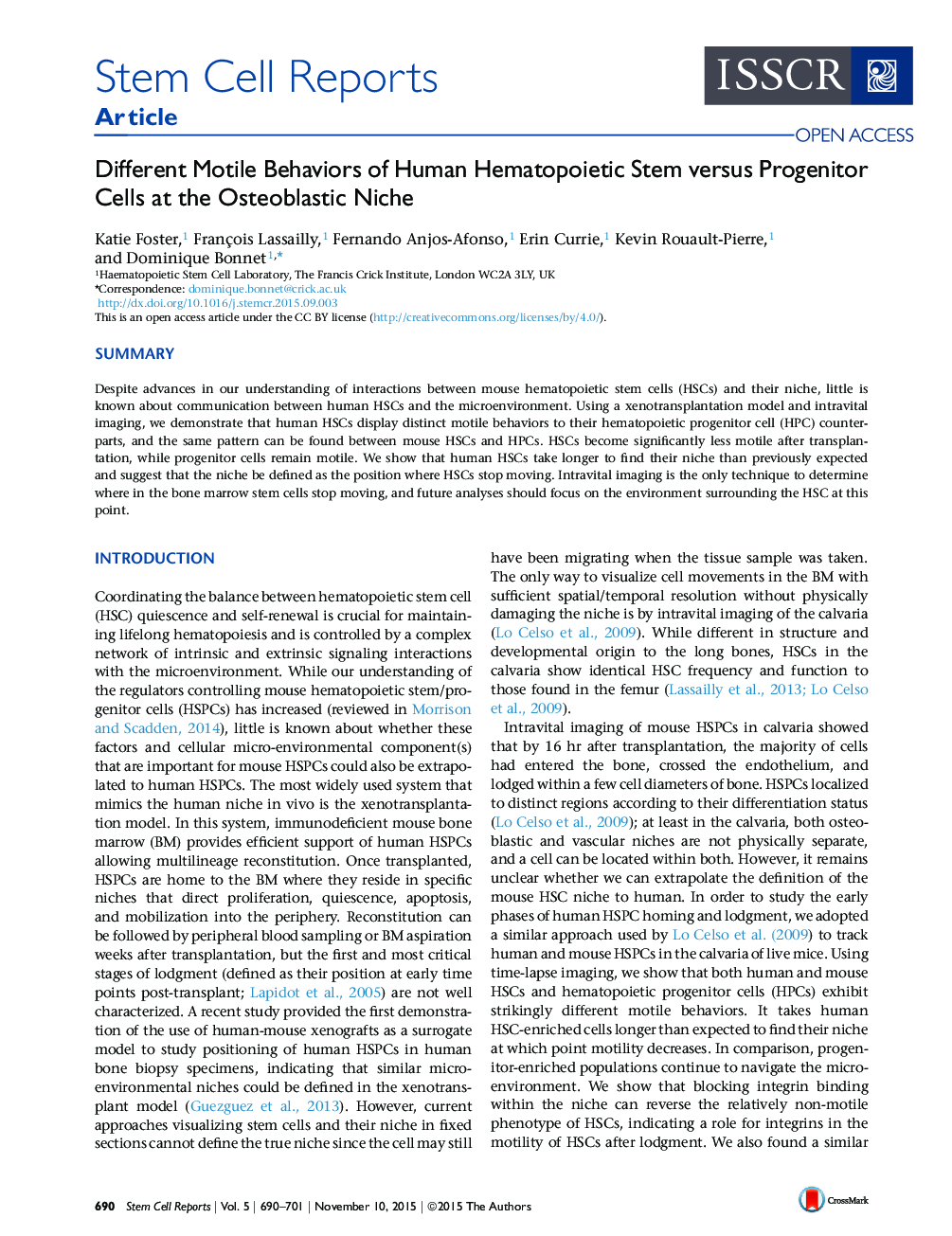| Article ID | Journal | Published Year | Pages | File Type |
|---|---|---|---|---|
| 2093744 | Stem Cell Reports | 2015 | 12 Pages |
•HSC niche should be defined by the position where HSCs stop moving•HSC anchorage to the niche can be studies using time-lapse intravital imaging
SummaryDespite advances in our understanding of interactions between mouse hematopoietic stem cells (HSCs) and their niche, little is known about communication between human HSCs and the microenvironment. Using a xenotransplantation model and intravital imaging, we demonstrate that human HSCs display distinct motile behaviors to their hematopoietic progenitor cell (HPC) counterparts, and the same pattern can be found between mouse HSCs and HPCs. HSCs become significantly less motile after transplantation, while progenitor cells remain motile. We show that human HSCs take longer to find their niche than previously expected and suggest that the niche be defined as the position where HSCs stop moving. Intravital imaging is the only technique to determine where in the bone marrow stem cells stop moving, and future analyses should focus on the environment surrounding the HSC at this point.
